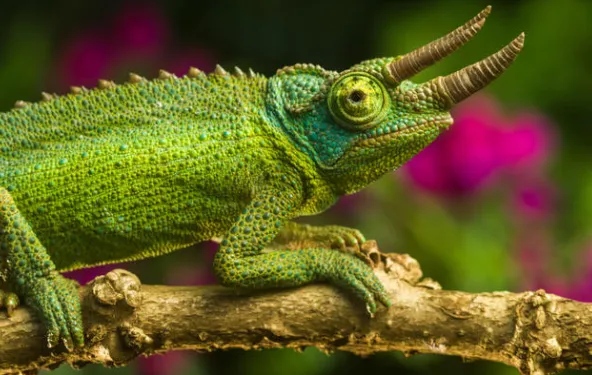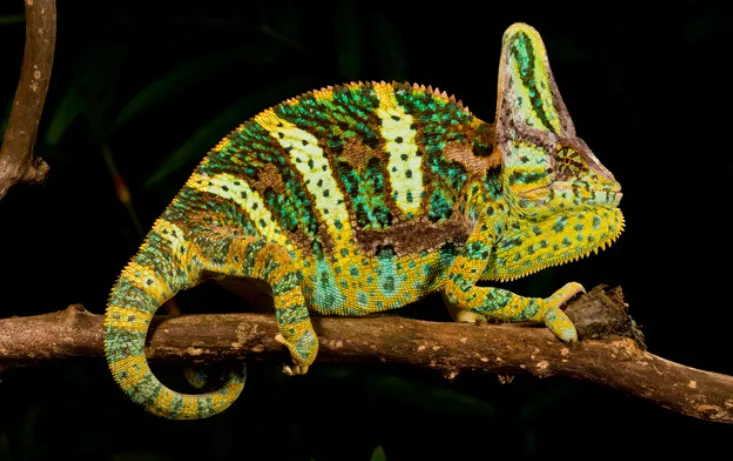Scientific Classification Quick Overview Hognose snakes are notable for their distinct upturned snouts, used effectively for digging and burrowing. Predominantly found in North America, their gentle disposition combined with unique defensive behaviors has earned them popularity in the pet trade. Fast Facts Did you know? When threatened, hognose snakes might enact a convincing death-feigning display, …
Reptile Profiles
Scientific Classification Quick Overview The Gila Monster (Heloderma suspectum) stands out as one of only two venomous lizards globally. It can be found in the southwestern United States and northwestern Mexico. The lizard’s striking patterned skin and venomous bite serve as a beacon of both curiosity and caution. Fast Facts Did you know? The name …
Scientific Classification Quick Overview The Frilled Lizard (Chlamydosaurus kingii), often referred to as the Frill-necked Lizard, is a unique reptile renowned for the dramatic frill around its neck. Native to Australia and Papua New Guinea, this lizard has fascinated people worldwide with its distinctive defensive posture. Fast Facts Did you know? The Frilled Lizard predominantly …
Scientific Classification Quick Overview The Komodo Dragon (Varanus komodoensis), recognized as the world’s largest living lizard, is an apex predator primarily found on the Indonesian islands of Komodo, Rinca, Flores, and Gili Motang. With its impressive stature, potent claws, and an acute sense of smell, it reigns supreme in its native environment. Fast Facts Did …
Scientific Classification Quick Overview The Green Iguana (Iguana iguana), often simply referred to as “iguana,” is one of the most recognizable and widespread reptiles. Native to Central and South America and the Caribbean, these lizards have become iconic in popular culture and have also been introduced to regions outside their natural habitat, partly due to …
Scientific Classification Quick Overview The Blue Iguana (Cyclura lewisi), also known as the Grand Cayman Iguana, is a vibrantly colored lizard endemic to the Grand Cayman Island. With its distinct blue hue and casqued head, this species stands out not only for its beauty but also its status as one of the most endangered lizards. …
Scientific Classification Quick Overview The Jackson’s Chameleon (Trioceros jacksonii) is renowned for its three distinctive horns, earning it the moniker “three-horned chameleon.” Hailing from East Africa, its unique appearance has endeared it to pet enthusiasts globally. Fast Facts Did you know? Male Jackson’s Chameleons boast three prominent horns reminiscent of the triceratops. In contrast, females …
Scientific Classification Quick Overview Veiled Chameleon (Chamaeleo calyptratus), also known as the Yemen Chameleon, is a distinctive and highly sought-after species due to its striking appearance and casqued (helmet-like) head. Native to Yemen and Saudi Arabia, they are now found in reptile collections worldwide. Fast Facts Did you know? The casque on the veiled chameleon’s …
Scientific Classification Quick Overview The Panther Chameleon (Furcifer pardalis) is renowned for its dazzling spectrum of colors and variable patterns. Native to Madagascar, they have become a popular choice among chameleon enthusiasts, admired for their vibrant appearance and unique behavior. Fast Facts Did you know? The color and pattern of a Panther Chameleon can vary …
Scientific Classification Quick Overview The Ornate Uromastyx, distinct for its vibrant coloration and intricate patterns, is a sought-after species among reptile enthusiasts. Hailing from the Arabian Peninsula, these desert dwellers have a robust build and a striking spiky tail, making them a standout in the Uromastyx family. Fast Facts Did you know? The term “ornata” …










